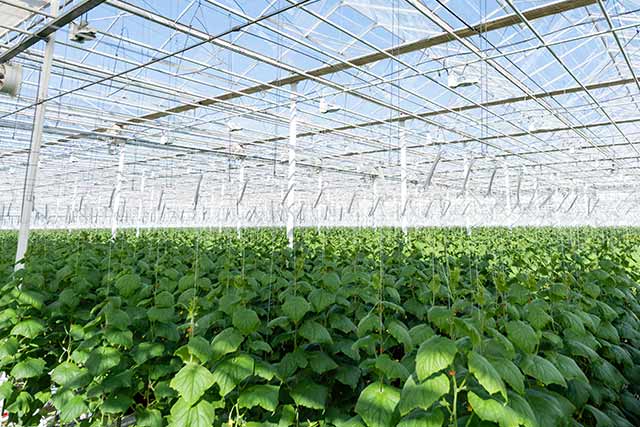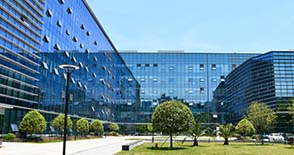-
Home > News & Events > Blog > Plant Nutrition
Saccharomyces, a unicellular fungus is a microscopic unicellular microorganism invisible to the naked eyes, but in the fermentation process, it creates an infinite wonderful world for human beings. Saccharomyces may produce various metabolic substances such as amino acids, vitamins, organic acids, polysaccharides and nucleic acids during its life activities. Such multi-component organic substances can be used as biological stimulants to effectively regulate physiological metabolism for plants, promote nutrient absorption for crops and improve stress resistance for crops.
Yeast glycoside is a yeast-derived biological stimulant obtained from Saccharomyces cerevisiae though liquid fermentation by Angel, and then concentrated or dried after autolysis or catalytic hydrolysis by exogenous enzyme. It is rich in zymosan, nucleic acids and amino acids. Taking granular products as an example, the production process is shown in Fig. 1.

Fig. 1 Production Process of Yeast Glycoside
The physicochemical requirements and hygiene requirements for yeast glycoside are shown in Table 1 and Table 2.
Table 1 Physicochemical Requirements
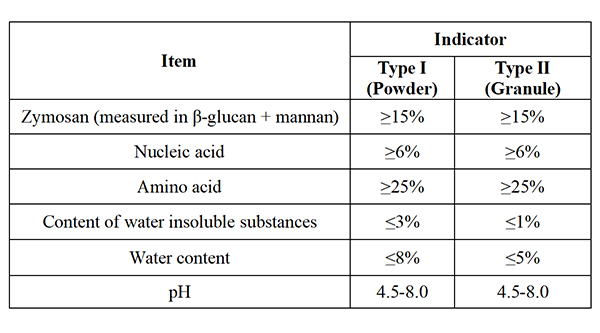
Table 2 Hygiene Requirements
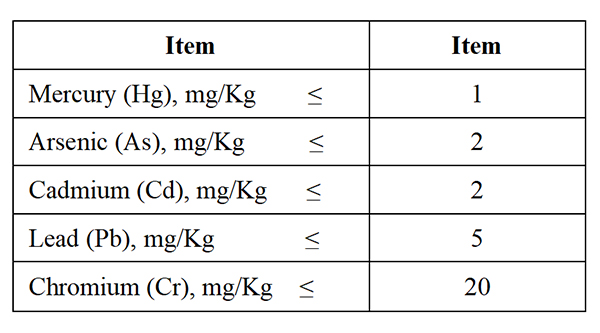
The main functional components of yeast glycoside consist of "one polysaccharide and three acids". "One polysaccharide" mainly refers to the polysaccharide of the yeast cell wall, which is different from the cell wall of bacteria and plants. The polysaccharide of yeast cell wall includes mainly β-glucan and mannan, and a certain amount of chitin. The polysaccharide of yeast cell wall can activate the signaling pathways of systemic acquired resistance (SAR) and systemic induced resistance (ISR) for plants, and induce plants to produce a series of defense substances, such as salicylic acid (SA), jasmonic acid (JA), stilbene synthase (STS) and superoxide dismutase (SOD), to help plants to resist external stress and grow robustly.
One of the "three acids" refers to yeast nucleic acids. Saccharomyces has a fast metabolism, and its transcription and translation are also fast, synthesizing more RNA and DNA in the process. After being applied to crops, nucleic acid and its degradation product can promote the synthesis of chlorophyll a, chlorophyll b and carotenoid (the chlorophyll in the chloroplasts of higher plants is mainly chlorophyll a and chlorophyll b, chlorophyll a mainly absorbs red light, and chlorophyll b mainly absorbs blue and violet light), which can strengthen the plant's ability to capture light energy in the process of light reaction.
Nucleic acid and its degradation product can also activate RuBP carboxylase (1,5-bisphosphate carboxylase) and catalyze the combination of CO2 and 1,5-ribulose diphosphate to generate 2 molecules of 3-phosphoglyceric acid, which is equivalent to strengthening the ability of crops to capture CO2 in the dark reaction process. Only when CO2 in the air is fixed by the plant, a series of further reactions can take place to synthesize carbohydrates, which are stored in the plant.
The second of the "three acids" refers to the yeast-derived amino acids. Amino acid substances in yeast glycoside are different in that they exist in the form of small peptides. The small peptides with a molecular weight less than 400 account for 80% of the amino acid substances, and those with a molecular weight less than 1,000 account for more than 90% of the amino acid substances, as shown in Fig. 2. Small peptides can not only be easily absorbed by plants and utilized as nitrogen sources, but also can promote the rapid growth of plants as signal substances.
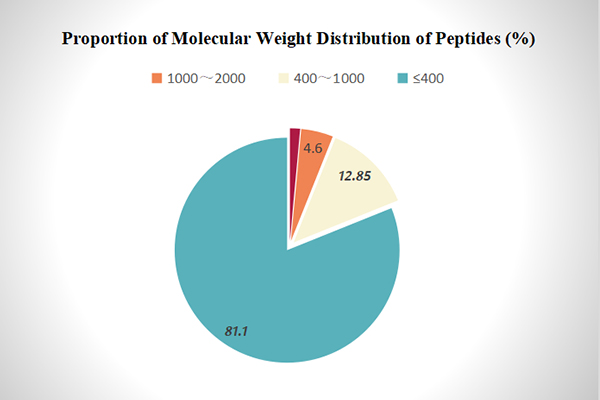
Fig. 2 Molecular Weight Distribution of Yeast Glycoside Peptides
In addition to dozens of conventional amino acids, there is also γ-aminobutyric acid in the composition of yeast-derived amino acids. γ-aminobutyric acid is also a signal substance, which can regulate osmotic potential, pH value and carbon-nitrogen balance of plant cells, and improve the ability of plants to resist stress. γ-aminobutyric acid can also be used as a regulatory ligand of glutamic acid to regulate nitrogen metabolism in plants and promote crop growth. The types and efficacy of amino acids in yeast glycoside are shown in Fig. 3 and Table 3.
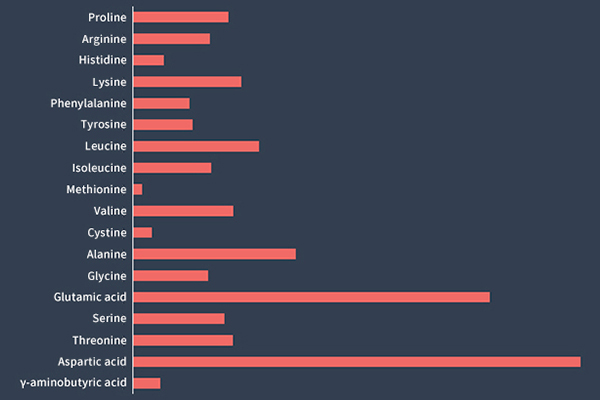
Fig. 3 Amino Acid Composition of Yeast Glycoside
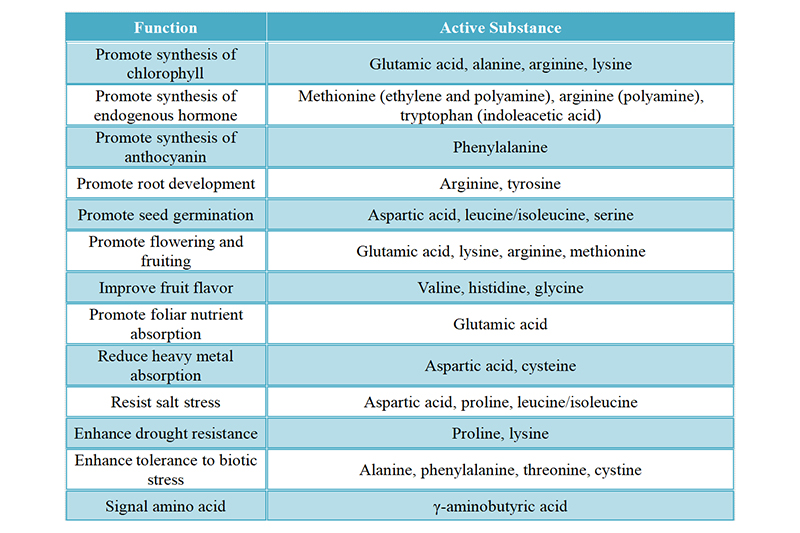
Table 3 Functions of Different Amino Acids in Yeast Glycoside
The third of the "three acids" refers to organic acids. During the rapid reproduction of yeast, organic acids such as malic acid, citric acid and succinic acid are produced by aerobic respiration. Organic acids can improve the availability of rhizosphere soil nutrients through acidification, chelation, ion exchange and reduction of these insoluble nutrients in the rhizosphere, thus increasing the absorption of rhizosphere nutrients by plants, and promoting the growth and development of plants. At the same time, organic acids can also be absorbed and utilized by plants, promoting the material circulation and energy flow of nutrient elements in plants.
Function and Application
1. Improve stress resistance for crops. The polysaccharide of yeast cell wall can activate the signaling pathways of systemic acquired resistance (SAR) and systemic induced resistance (ISR) for plants to enhance their defense responses.
2. Protect leaves and upgrade fruits, as well as increase sugar and improve quality. Yeast nucleic acid and its degradation product can promote the synthesis of chlorophyll a, chlorophyll b and carotenoids, and enrich the pigments of leaves and fruits; activate the key enzyme RuBP in plant photosynthesis, and catalyze the fixation of CO2 to be converted into carbohydrates.
3. Promote growth with signal substances. The product is rich in small molecular nitrogenous substances, including a variety of L-free amino acids, γ-aminobutyric acid and small peptides, to promote crop growth as signal substances.
4. Improve fertilizer efficiency. Yeast glycoside can promote the root growth of crops, and expand the absorption range of roots. Moreover, it can be used with traditional fertilizers to improve nutrient utilization and reduce loss.
See Table 4 for usage and dosage details.
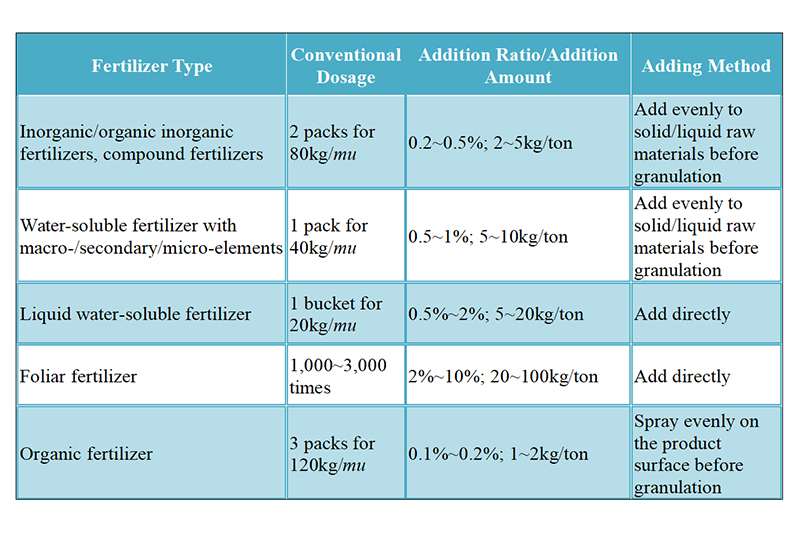
Table 4 Usage and Dosage of Yeast Glycoside
 | Published by Zhou Can Engineer of Plant Nutrition Division |
The yeast source organic fertilizer has the advantages of being nutritional, efficient, environmental friendly, soil-improving, etc., and it is suitable for the application of high added value agricultural products, animal husbandry and economic crops. Angel is the founder of yeast source organic fertilizer, and the products all have passed through the EU Organic Certification and China Organic Certification.
About Angel :
Angel Yeast Company is a high-tech listed company specializing in yeast and biotech. Product business covers Yeast and Baking, Yeast Extract-Savoury, Nutrition & Health and Biotechnology fields. It is one of the world's leading companies in the yeast industry. Angel has 12 holding subsidiaries and provides products and services for more than 150 countries and regions.
Press Contact:
ANGEL YEAST CO., LTD
Address: 168 Chengdong Avenue, Yichang, Hubei 443003, P. R.China
Tel& Fax: +86-717-6371118
Email: weiqz@angelyeast.com
